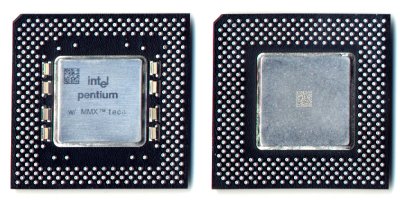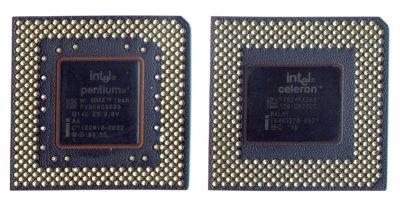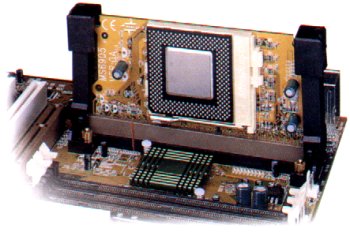CPU Performance Overview Q1/1999
Intel Released New Celeron Processors
On the beginning of January 1999 Intel launched two new Celeron CPUs, each for the well known Slot1 as well as for the new Socket370. The new Celeron CPUs are running at 66 MHz front side bus clock and at the core clock speeds of 366 and 400 MHz. They include the 128 kB on-die L2-cache, known from the previously released Celeron 300A and Celeron 333. This L2-cache boosts the performance of Celeron into the same area as Pentium II CPUs at the same clock speed, so that there's hardly any performance advantage of Pentium II over Celeron anymore. The new Socket370 looks pretty similar to Socket7 when you have a first peek at it, but it turns out that Socket370 has an additional row of pins. Socket370 is a conversion of Slot1 to a socket, running at the same bus protocol as the Pentium II, the GTL+ bus protocol. Thus it can work with the known Pentium II chipsets, as 440BX, 440LX, 440EX and the new 440ZX from Intel or the Apollo Pro chipset from VIA. The reason behind Intel's move back to a socket rather than a slot-solution is pretty simple. Now since the L2-cache fits onto the CPU-die, there's no additional space needed anymore, as it is provided by Slot1 or Slot2. Socket370 is supposed to save Intel a major amount of money in production costs over Slot1 and the motherboards for Socket370 will also be cheaper to produce than Slot1 boards. Once Intel is producing Pentium III in 0.18 micron technology, as planned for Q3 1999, this new high end CPU will also have on-die L2-cache (CPU code name 'Coppermine') and will most likely go back to a socket-solution as well. It turns out that Slot1 was only a transition for the time when Intel was not able to place CPU core and L2-cache onto the same piece of silicon.
The size of Celeron for Socket370 is the same as Pentium MMX's, but you can see that Celeron has a lot more pins.
The MS-6905 from MSI let's you run a Celeron for Socket370 in any Slot1-board.
Some of you may guess that Celeron's big disadvantage against Pentium II is its 66 MHz bus clock. Pentium II 350, 400 and 450 run at 100 MHz bus clock or front side bus and we learned last year that this is what it's supposed to take for high performance computing. Running normal software as e.g. office or 3D gaming applications does hardly show much of a difference between systems that run at 66 vs. 100 MHz FSB though. Most of the performance is still achieved by the L2-cache and although Celeron's L2-cache is only 128 kB vs. 512 kB of the Pentium II, the Celeron L2-cache runs at CPU-core clock, the external L2-cache of Pentium II is only clocked at half the CPU core speed.
Get Tom's Hardware's best news and in-depth reviews, straight to your inbox.
Current page: Intel Released New Celeron Processors
Next Page Celeron Now Threatening Pentium II Sales

